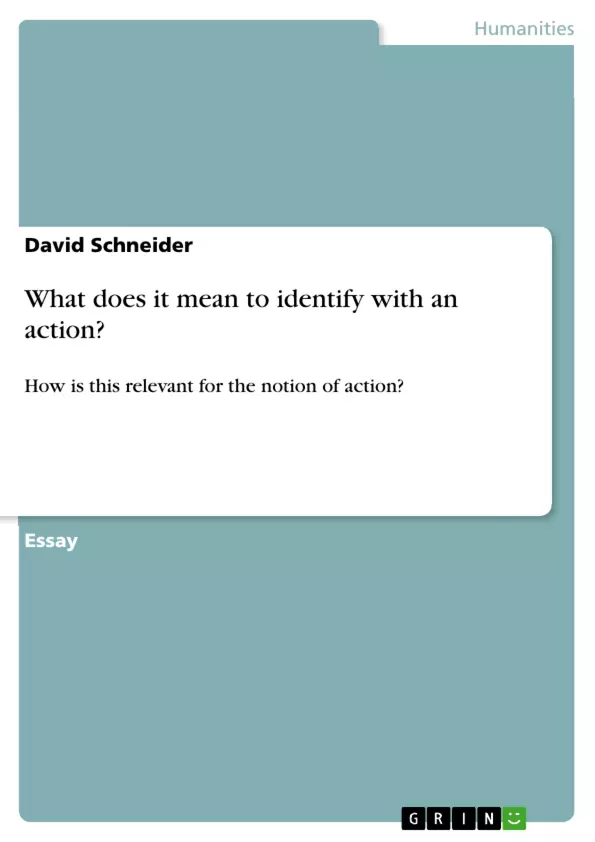In a first step, the question "what exactly is an action?" is discussed based on J. David Velleman’s essay “What Happens When Someone Acts”. In a second step, we will be shed a light on the Identification and Wholeheartedness of actions.
Inhaltsverzeichnis (Table of Contents)
- What does it mean to identify with an action? How is this relevant for the notion of action?
- What is an action?
- The Identification and Wholeheartedness of actions
- The impact of desires on our actions
- When does someone act wholehearted?
- The notion of action
- The role of identifying with one's desires
Zielsetzung und Themenschwerpunkte (Objectives and Key Themes)
This essay explores the concept of identifying with an action and its relevance to understanding the nature of action. The author begins by examining J. David Velleman's critique of Causal Theories of Action and introduces the concept of 'identifying with operative motives' as a crucial element in distinguishing human action from animal behaviour. The essay then delves into H.G. Frankfurt's concept of 'wholeheartedness' and its connection to consciousness, reflexivity, and the conflict between desires. It examines how identifying with a desire leads to a wholehearted action, which is characterized by mindfulness and self-awareness.
- The nature of action
- The role of identification in action
- Consciousness and reflexivity
- Conflict between desires and the concept of wholeheartedness
- Mindfulness and its connection to wholehearted action
Zusammenfassung der Kapitel (Chapter Summaries)
- The essay begins by outlining the problem of defining what constitutes an action, distinguishing it from mere happenings. It introduces Velleman's critique of Causal Theories of Action and emphasizes the importance of the agent's "identifying himself with his operative motives" for understanding human action.
- The author then explores the concept of consciousness and its connection to identification, highlighting the importance of reflexivity in being able to identify with an action.
- The essay then examines the impact of desires on actions, exploring two scenarios of conflict between desires: conflict between higher-order desires and first-order desires, and conflict within the higher-order volitions themselves.
- The author delves into the concept of wholeheartedness, arguing that acting wholehearted involves acting in accordance with a higher-order volition that the person truly desires.
- The essay then discusses the notion of action in the context of identifying with one's desires, suggesting that this identification helps to overcome the internal conflict within the person.
Schlüsselwörter (Keywords)
The essay focuses on key concepts such as action, identification, wholeheartedness, consciousness, reflexivity, desires, and mindfulness. It examines these concepts through the lens of philosophical theories of action by Velleman and Frankfurt. The author uses examples and scenarios to illustrate the interplay between these concepts and their relevance to understanding human behaviour.
- Quote paper
- David Schneider (Author), 2014, What does it mean to identify with an action?, Munich, GRIN Verlag, https://www.grin.com/document/374543



